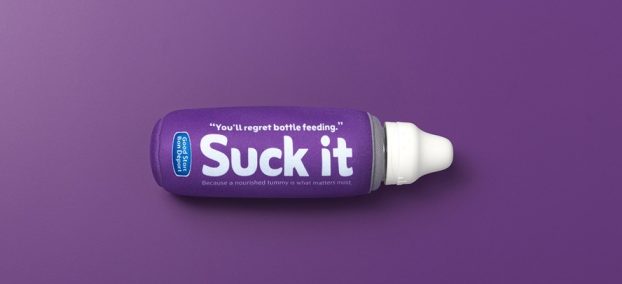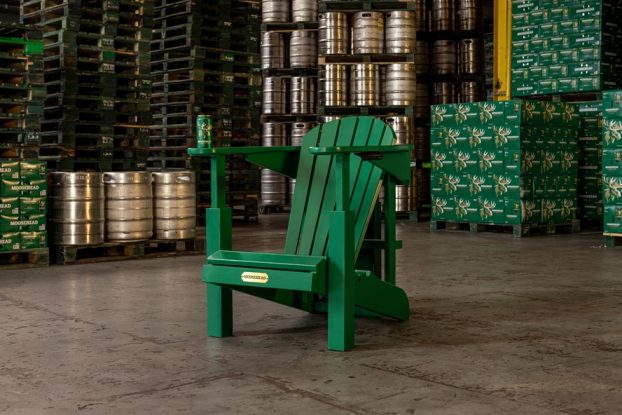Welcome to the future.
As the 20th century winds down to its exciting conclusion, advances in technology are leading to the development of whole new forms of out-of-home advertising, and giving some traditional forms a face-lift. But do these changes really represent a brave new world for out-of-home – or are they simply clever gimmicks with a short half-life? Wendy Cuthbert offers this report from the cutting edge.
Fuel-Pump Advertising
Get ’em when they’re running on empty. That’s the general idea behind TimeLine Media’s new fuel-pump advertising concept.
The Kitchener, Ont.-based company is currently testing its proposed network, which consists of TV monitors installed atop self-serve fuel pumps, at local Pioneer Petroleum gas stations. The monitors play a loop that includes standard television commercials and infomercials, along with filler such as local and national news and trivia. As soon as a customer drives up to the pump or presses the button to start pumping the gas, the monitor will begin playing one of several loops.
The system also prints out coupons, which is what makes it such a potentially attractive advertising vehicle, according to Wayne Twaits of Thinc Ideas, the Toronto-based firm hired to help develop the concept and market it to the advertising community.
‘It’s a combination of TV and direct response,’ says Twaits. The pump monitors have all the impact of television, he explains, but thanks to the coupon-printing capability, they are considerably more ‘proactive.’
People are tired of invasive advertising, Twaits says. The advantage of the pump ad system, he argues, is that it reaches consumers when they are (a) in the middle of a commercial transaction anyway, and (b) in a down-time, which renders them more open to communication.
A number of advertisers have signed on for the test run – among them Cantel, National Car Rental and the Canadian Cancer Society.
Consumers who use self-serve pumps are, by definition, interested in saving money, which begs the question: Is this the audience that advertisers want?
Twaits, for his part, predicts that an ever-widening range of customers will be choosing self-serve, for the simple reason that gasoline retailers are trying to reduce the number of full-service stations they operate in order to reduce costs.
Not everyone is fully sold on the concept of fuel-pump advertising.
‘I’m not sure you’d be reaching [the customer] in the right frame of mind,’ says Bruce Grondin, senior vice-president, media director with The Media Edge in Toronto. People are generally in a hurry when they stop to buy gas, he notes – and they’re often in a bad mood as well.
Still, he says, the coupon-dispensing function might make it an appropriate point-of-sale vehicle for confectionery items sold at the station, or for nearby fast food outlets.
Talking Washroom Ads
It’s a safe bet that no black-clad nightclub patron has ever stood at a urinal contemplating the poster installed above the fixture, and thought to himself, ‘Gosh, I wish this ad could speak to me.’
Nevertheless, Montreal-based Zoom Media has concluded that there might just be a market for talking washroom ads.
Zoom, which operates a poster network in the washrooms of bars and nightclubs across the country, recently began making an audio option available to advertisers. Labatt Breweries of Canada used the talking ads this past summer, as part of the ongoing ‘Out of the Blue’ campaign for its flagship brand, Labatt Blue.
The ads look like typical Zoom Media washroom panels (which are used primarily by advertisers targeting the 18-34 age group), but contain a built-in light sensor that activates an audio clip when a patron stands in front of a urinal or enters a stall.
Zoom first flirted with the idea of adding an audio element to their washroom ads a few years ago, recalls Claude Breault, the company’s manager of communications, but it just wasn’t technologically possible to do so at a reasonable cost.
‘The problem was that it [required] a special panel and it was too expensive to build,’ he says.
As technology advanced, Breault explains, the size of the sensory device was reduced, to the point where it could be added to Zoom’s existing panels.
The first advertiser to use the technology was Le Jardin Zoologique du Quebec. The ads featured the image of a button, which washroom visitors were invited to press. When they did so, they activated 20 seconds of wild animal sounds.
Breault makes no claim that talking washroom ads will revolutionize out-of-home – or even that they will be used all that often. It’s simply a means of providing added value for advertisers, he says.
Big-Screen Video
If you’ve ever attended a game at SkyDome, and found yourself watching the JumboTron more than the action way down there on the field, then you’ll grasp the truth of this statement: There is something captivating about a really, really big screen.
Not surprisingly, the out-of-home industry is eager to embrace the entrancing possibilities of large-scale, moving imagery. Both Toronto and Montreal, in fact, now boast large outdoor screens capable of displaying full-motion video.
Earlier this year, Spotvision of Montreal installed its first Smartvision screen on that city’s busy St. Catherine Street. Downsview, Ont.-based Tribar Industries, meanwhile, has a 700-square-foot LumatronX screen in place on a Mediacom billboard site near Toronto’s Gardiner Expressway.
Both systems employ LED technology. Bruce Maschmeyer, general manager of Tribar, says it’s only recently that this technology has advanced to the point that large-scale video is possible in outdoor.
In the past, red was the only colour visible at the high intensity necessary for outdoor. However, the light output capacity of the technology has increased, so that the spectrum’s missing colours – green and blue – are now also visible in bright sunlight. This has made all the difference.
So far, the advertisers to use the Tribar screen – notably Fido and Omega – have simply run existing television spots. But in future, Maschmeyer says, some may consider creating custom spots specifically for the big screen.
Because the entire system is run online, there are none of the planning and execution delays that exist with traditional billboards. Ads can be changed instantaneously, which gives advertisers the opportunity to consider tailoring executions to the time of day or even the weather.
The Media Edge’s Bruce Grondin says that the advent of big-screen video is one instance where technology really is advancing the medium.
‘They’re taking traditional out-of-home and making it better,’ he says.
Also in this report:
– Outdoor faceoff p.23
– Mainstream advertisers go wild in the streets p.24
– Transit ads send coded messages to teens: Use of secret numeric sequences showed Bell Mobility ‘gets’ how its pagers are used p.25























